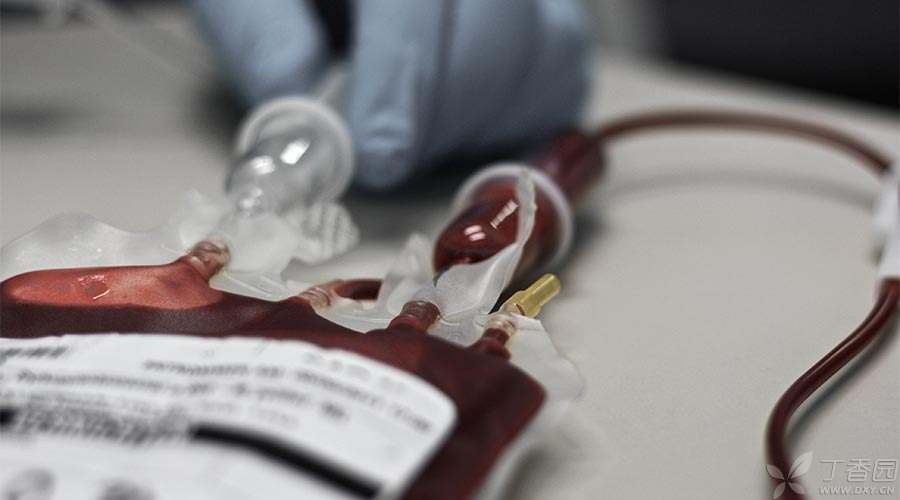
After years of hard work, At present, the safety of blood transfusion in our country has achieved remarkable improvement, and it is extremely rare to be infected with diseases through blood transfusion. Donated blood must go through strict screening and tracking, so regular blood transfusion is relatively safe. However, informal blood transfusion is likely to have serious consequences.
After blood transfusion, a certain proportion of recipients had adverse reactions to blood transfusion.
These adverse reactions include immune-related blood transfusion reactions, non-immune-related blood transfusion reactions and infection.
1. Immune-related transfusion reactions
The vast majority of blood transfusion reactions are caused by blood type mismatch. However, this kind of situation is rare, and at present many effective measures can prevent the occurrence of this error.
Patients with mild symptoms may have itching, urticaria, asthma, fever and other symptoms. Severe cases will have anaphylactic shock.
Immune-related transfusion reactions include:
1) Non-hemolytic fever reaction
This is one of the most common blood transfusion reactions. As the name implies, this kind of fever symptom occurs at the same time as the red blood cells do not have hemolysis reaction, so it will still occur even if the blood type is correctly matched. The more blood transfusions, the higher the probability of occurrence, so patients with multiple blood transfusions are more prone to this kind of fever reaction and other immune reactions.
The root cause of this kind of reaction is that the body’s immune system mistook some components of the input blood for harmful invaders, thus producing specific antibodies to launch an attack defense war, thus causing a series of fever reactions in the body. Screening before blood transfusion can reduce the probability of this reaction.
The root cause of this kind of reaction is that the body’s immune system mistook some components of the input blood for harmful invaders, thus producing specific antibodies to launch an attack defense war, thus causing a series of fever reactions in the body. Screening before blood transfusion can reduce the probability of this reaction.
2) hemolytic reaction
Although the occurrence probability of such reactions is relatively low, they may cause extremely serious consequences. The occurrence of such reactions is usually due to the mismatch of ABO blood type or Rh blood type, resulting in the body directly attacking the donor’s red blood cells, and in serious cases, the body may be in danger of life.
Immune response to donor platelets will destroy the injected platelets. For such patients, it is difficult to find blood supply that does not cause blood transfusion reaction.
In some rare cases, the immune response induced by blood transfusion may cause blood transfusion-related acute lung injury. Most patients have symptoms such as dyspnea, but most patients have good prognosis.
2. Non-immune-related responses
The reasons for this reaction include:
1) Excessive body fluid volume
Excessive body fluid volume is mainly caused by excessive blood input volume, especially for special patients who have not lost blood.
The treatment for such patients is mainly through drugs to increase urine volume (such as diuretics), thus excreting excess water in the body to reduce blood volume.
2) Repeated blood transfusion
Repeated blood transfusion may lead to iron overload, also known as acquired hemochromism. Excessive iron content in the body will affect multiple organs such as heart, liver, pancreas, etc. Therefore, it is necessary to use drugs to remove iron at the same time.
3. Infection
Due to the standardization and standardization of blood collection, monitoring, storage and use management at present, the probability of regular blood transmission of viruses such as hepatitis B virus, hepatitis C virus, HIV, etc. is significantly reduced.
Blood is at risk of contamination by bacteria and parasites. Bacterial contamination may occur during blood collection and later storage. Some blood supplies may be infected by parasites themselves. These contaminated blood may cause systemic infection in the recipient. However, the probability of occurrence is generally low.
Due to the standardization of blood collection and storage at present, the overall incidence of bacterial contamination in blood is relatively low. In contrast, platelets are more vulnerable to bacterial contamination. Unlike most blood products, platelets need to be stored at normal temperature, so once bacterial contamination occurs, bacteria can reproduce at normal temperature and cause infection of blood recipients.
Editor: Zhang Qing
